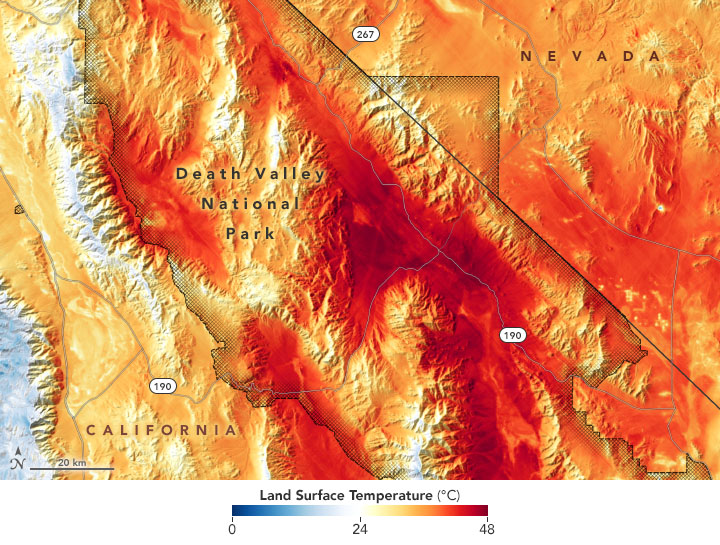Report details causes of recent California rolling blackouts

Enlarge / August 14 and 15 saw a heatwave drive rolling blackouts. And then on August 16, a station in Death Valley hit 130°F... (credit: NASA EO)
In mid-August, just before dry lightning storms ignited a series of fires that would break records in California, an intense heatwave resulted in rolling blackouts on two consecutive days. The trouble came in the evening, when solar generation drops off, leading some to claim this was the consequence of relying on renewable electricity. But it’s not that simple, as the outages could have been avoided. A new “preliminary root cause analysis” report from two state commissions and the California Independent System Operator that runs the grid presents a clearer picture of what went wrong.
The rolling outages affected a few hundred thousand people starting around 6:30pm on both August 14 and 15. They were actually the result of the grid's rules: once the remaining reserve generation falls below six percent of current demand, the grid operator is required to institute rolling blackouts.
The report blames the need for outages on three things: extreme and widespread hot weather, a failure to update peak-demand forecasting practices as solar generation grows, and mistakes on the grid market that led to some plants exporting power when it was actually needed in-state.
Read 10 remaining paragraphs | Comments
https://ift.tt/3nDhUc0
from Ars Technica https://ift.tt/36SGNKW

No comments